How to Play Checkers — Game Types and Tips for Beginners
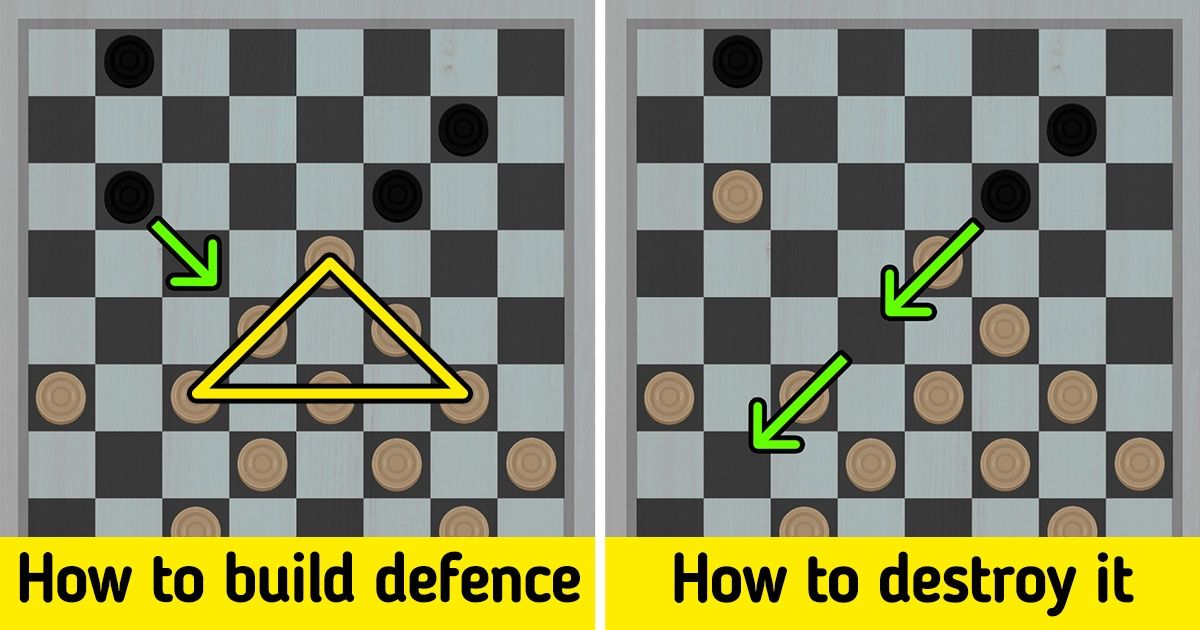
At first glance, checkers looks like a fairly simple board game, especially in comparison with chess. However, in practice, even an experienced player can’t always build a winning strategy and defeat the enemy. A good memory and logical and spatial thinking are important in this game. And it will be much easier for beginners to master checkers if they become familiar with various tricks and techniques.
5-Minute Crafts would like to tell you how people play checkers in different countries, which methods make your chances of winning higher, and whether you can move a checker piece backward or not.
The game basics
1. The checkers board
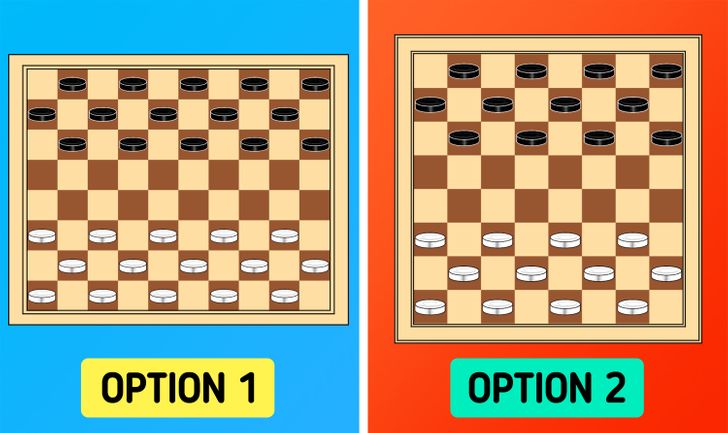
A checkers board has squares of 2 different colors, located side by side. The size of the board and the number of squares depend on the type of checkers. Quite often, checkers is played on a 64-square board, as well as chess. But for international checkers, a 100-square board is used, and sometimes the board can be rectangular and consist of 80 squares.
A 64-square board consists of 8 vertical rows and 8 horizontal rows. The vertical rows are named with letters from “a” to “h.” The horizontal rows are marked with numbers from 1 to 8. Each game square can also have its own number. For example, in international checkers, where a 10 × 10 board is used, the squares are numbered from 1 to 50. Thus, each square has its own coordinates, like a letter of a vertical row and a number of a horizontal row, or a specific number. Thanks to this, all the moves of the game can be recorded.
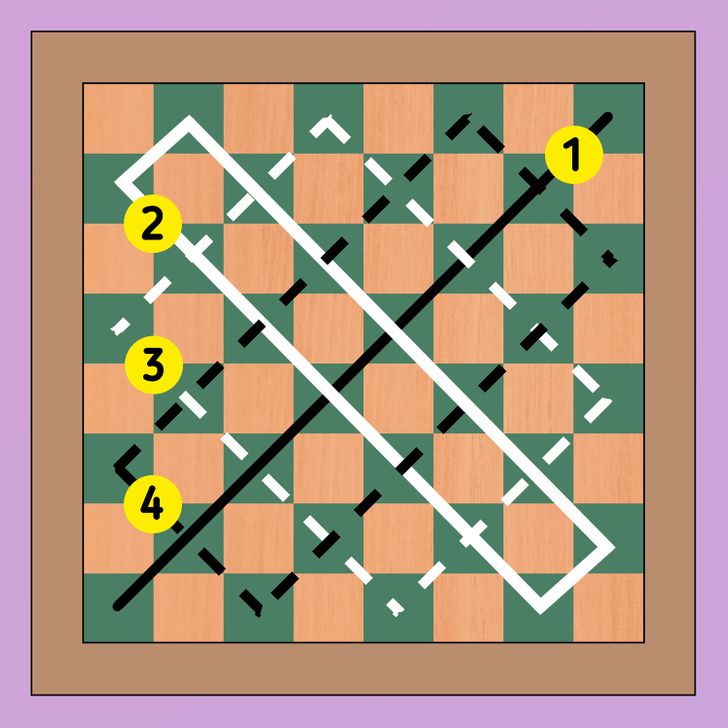
Checkers move only on black squares and diagonally. There are a few main diagonals of the board. Take a look at the picture above.
1. The main diagonal is located on 8 squares from a1 to h8.
2. The rectangular contour is located at right angles to the main diagonal and formed by 4 diagonal lines, a7—b8—h2—g1—a7.
3. The rectangle consists of diagonal lines, a5—d8—h4—e1—a5.
4. The rectangular contour consists of diagonal lines a3—f8—h6—c1—a3.
2. Game pieces (checkers)
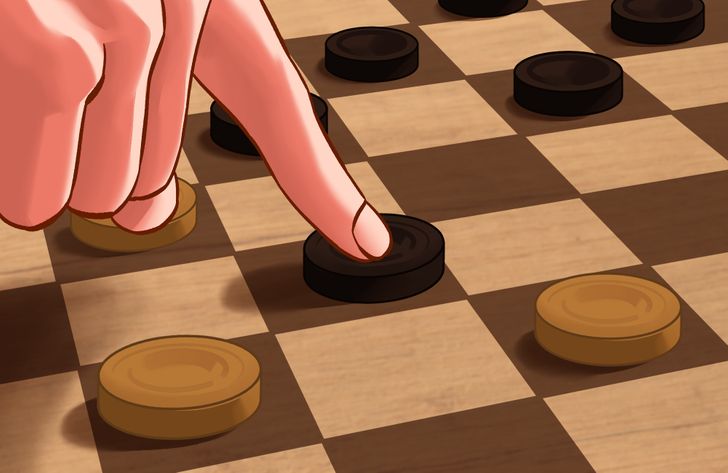
Checkers has game pieces of 2 different colors, which are moved by the players on the board. The number of checkers at the beginning of the game depends on the size of the board: for a 64-square board you need 12 checkers of each color, and for a 100-square board, you need 20 checkers of each color.
Each player plays with the pieces in the color that they are assigned at the beginning of the game. During the game, all checkers move on black squares only unless the rules of a specific version of the game specify otherwise.
3. Game rules
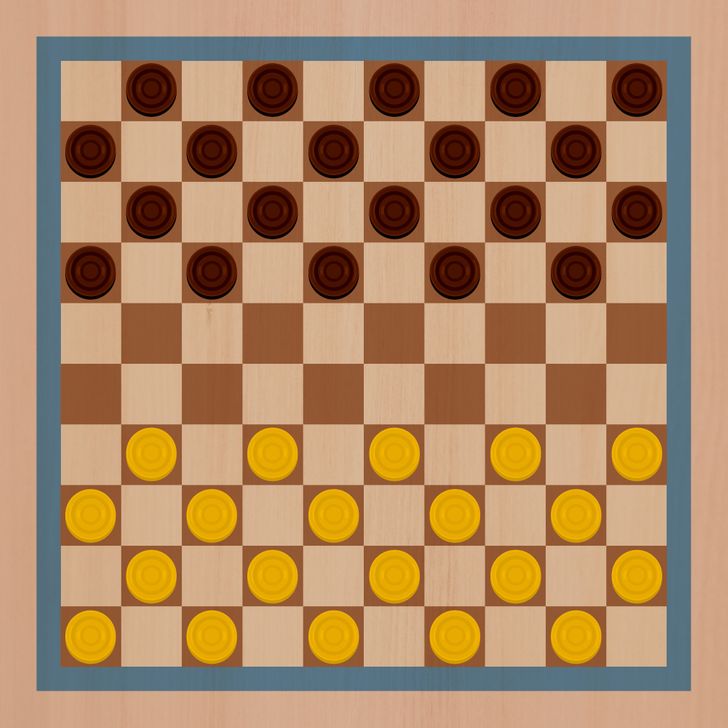
There are different types of checkers games. Below are the rules of the game that are followed in international checkers.
- Before the start of the game, the board should be placed in a way so that the lower-leftmost square is dark.
- All checker pieces should be placed on the board (10 × 10 squares) as shown in the picture above.
- The player with white checkers moves first. Then the moves are made alternately.
- At the beginning of the game, all checkers are considered ordinary. Therefore, each player moves only 1 checker one square diagonally forward.
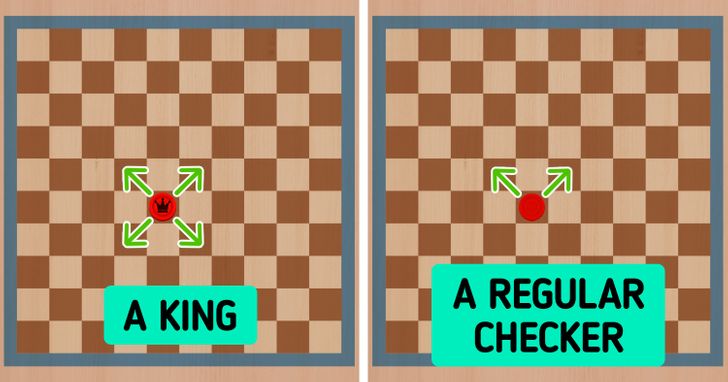
- If an ordinary checker reaches the last opposite horizontal row of the board, it will get more opportunities to move. This change is called crowning.
- Ordinary checkers move forward only to the next square along the diagonal, and the kings move forward and backward by any number of squares along the diagonal.
The final goal of the game: to capture all the opponent’s checkers (removing them from the board) or to deprive them of the opportunity to move (lock them).
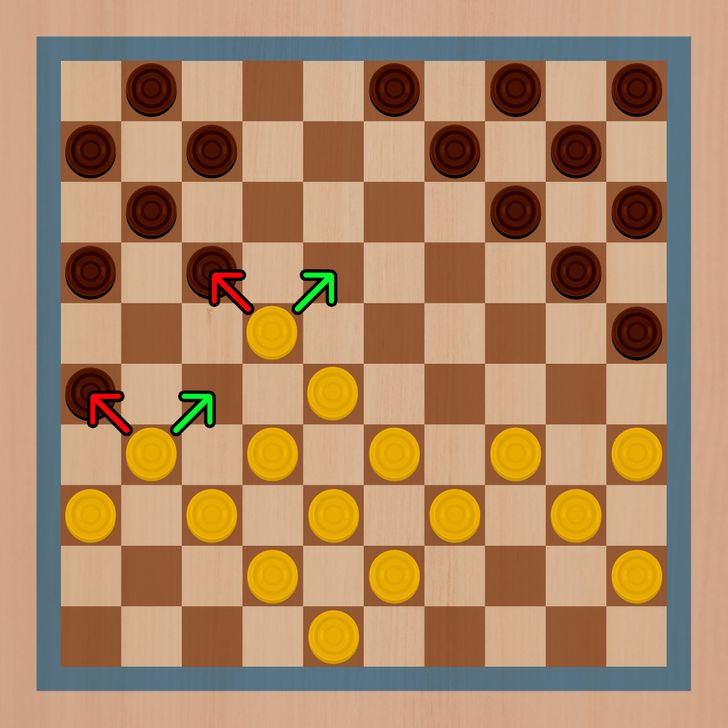
Take a look at the picture above. It shows the possible moves for 2 white checkers. Each of them has a limited number of moves because the squares they could move to are already occupied by a black checker. Thus, black pieces partially block the moves of the whites and vice versa.
You can get rid of the opponent’s checkers by capturing them.
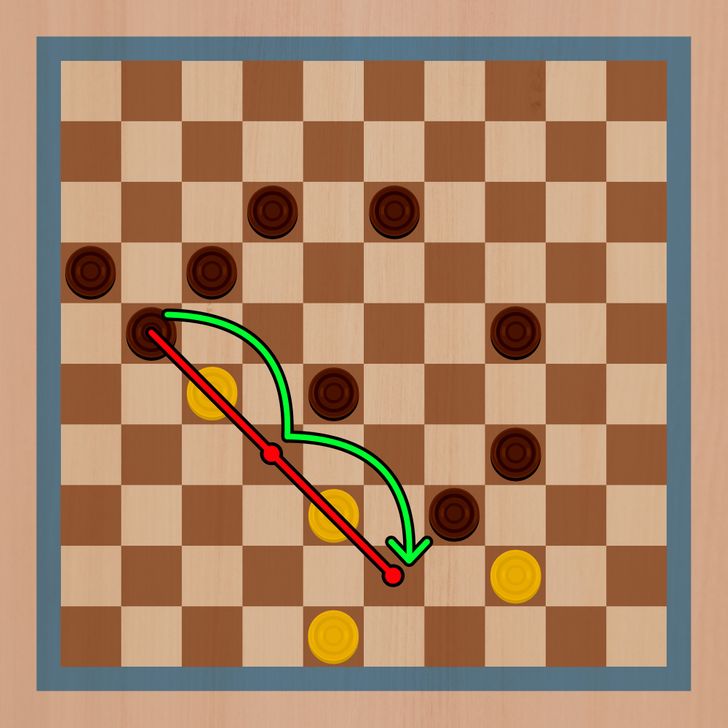
The rules for capturing the opponent’s checkers:
1. If an opponent’s checker is in front of your checker, one square ahead, and the next square diagonally after it is empty, you can capture this checker. You must jump over it, occupying an empty square behind the checker, and remove the checker from the board.
2. If the situation allows, you can take several checkers this way. Take a look at the picture above: a black checker jumps over 2 white checkers in 1 move and captures them at the same time. After this move, these white checkers should be removed from the board.
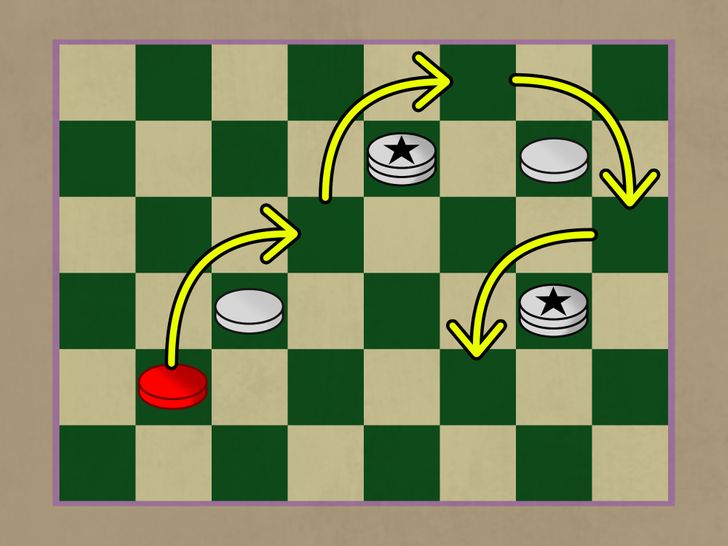
3. In international checkers, an ordinary checker can’t move backward, but it can jump backward. An example of such a move with the capture of the opponent’s checkers is shown in the picture above.
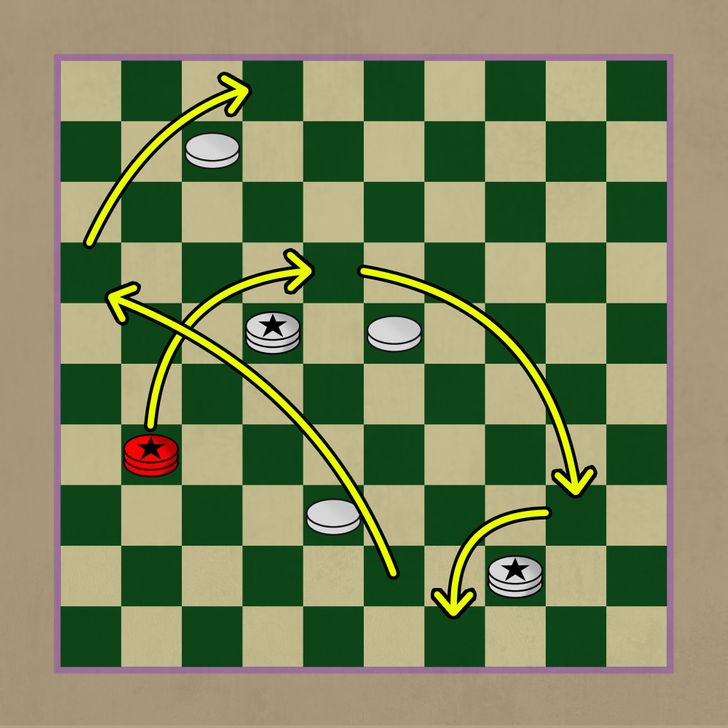
4. The king has more opportunities for an attack since it can move freely along any number of squares diagonally. The picture above shows one of the possible moves of the king: when attacking, it jumps over several squares at once and captures as many of the opponent’s checkers as possible.
5. Whenever possible, the player must capture the opponent’s checker.
6. If, after capturing several opponent’s checkers, the checker or the king comes across the already captured checker, the move should be completed. It’s forbidden to capture the same checker twice, but you can cross the same empty square 2 times.
7. If there are several options for capturing a checker, it’s compulsory to perform the one that results in the removal of the maximum number of opponent’s checkers, regardless of whether they are ordinary checkers or kings. At the same time, it makes no difference whether you attack with an ordinary checker or the king.
8. If an ordinary checker reaches the opposite edge of the board in the process of capturing, but must then jump another piece backward, it remains ordinary. Or if it stops there, it becomes the king. But it can move as the king only from the next move.
4. Winning or a draw
A player has won the game in one of the following cases:
- All the opponent’s checkers are captured.
- The remaining opponent’s checkers are locked;
- The opponent says they give up.
There are also many situations that are considered a draw, like, for example, if the players move only the kings within 25 moves without using ordinary checkers or capturing them.
Tips and tricks
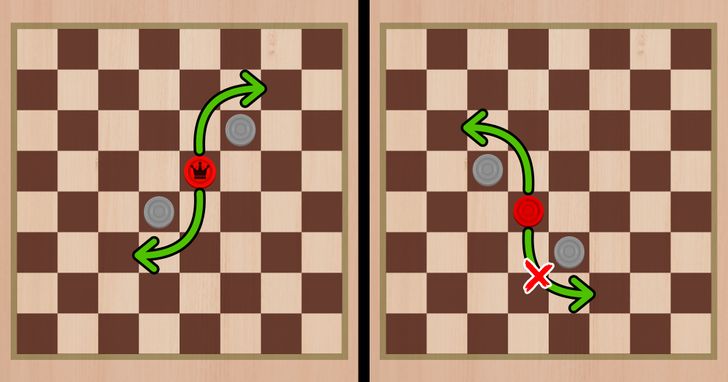
- It might seem that the most obvious and simple advice is to know the rules. But in a particular variation of the game, they may differ slightly, which can be a problem. Therefore, at the very beginning, if this is not a professional competition, it’s better to discuss the rules with the opponent. For example, according to the rules in Czech checkers, an ordinary piece can jump and move only forward, while this restriction doesn’t apply to the king. This simple rule often causes a lot of arguments among players.
- In a situation where there is more than one option for capturing the opponent’s checkers, choose the one that allows you to either protect your checker (for example, by moving it to the square at the edge of the board or in the corner) or open up more opportunities for it to move.
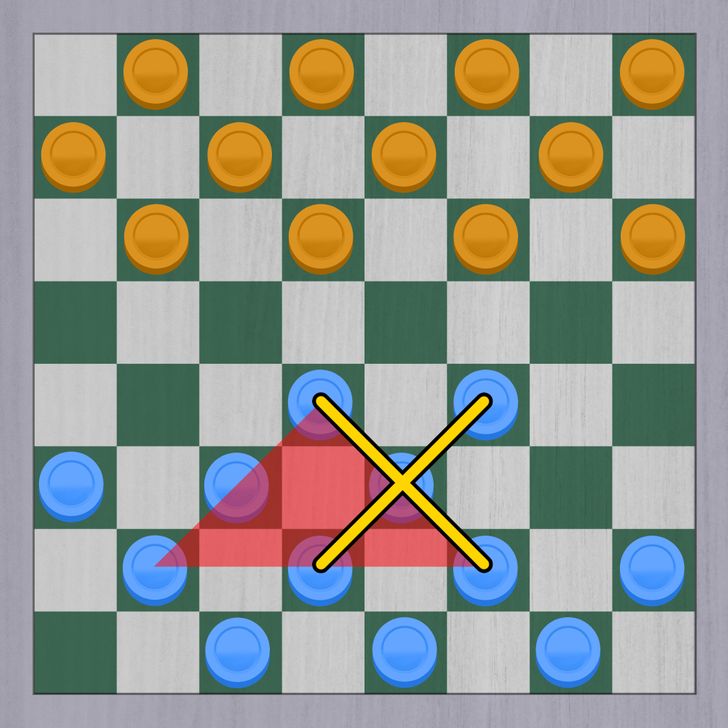
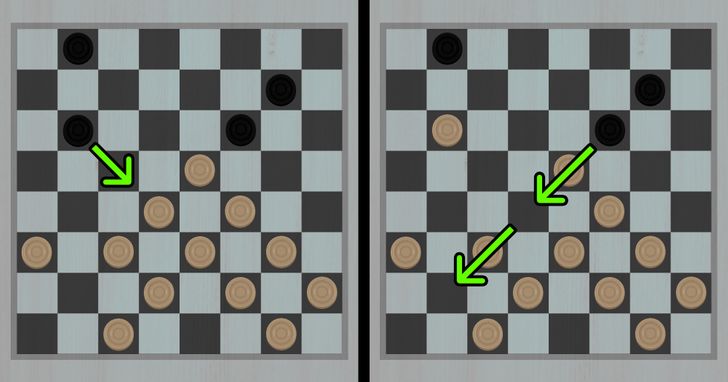
- During the game, you should carefully monitor the moves of your opponent, trying to predict their attack strategy. Otherwise, even a strong defense can be destroyed. Above is the variant of a game in which a clever move of the player who has the black pieces forces the whites to capture a black checker, thereby breaking the defense of the whites. During the next move, the black checkers will capture 2 white pieces at once, and then one of the black checkers becomes the king and takes the main diagonal on the board.
- At the beginning of the game, you have checkers in the first row. This way, they are protected from the opponent’s attack and, at the same time, they don’t allow their ordinary checkers to become the kings. Therefore, try to move them forward as late as possible.
- Learn the strategies and methods of defense and attack used by experienced players, and watch the videos of other people’s games.
- Play checkers online with more experienced opponents and record their moves in order to analyze them later and use them in future games.
The types of checkers
There are many types of the checkers game, which differ from each other in rules, board sizes, the number of checkers, and their starting position. Let’s take a look at a few of them.
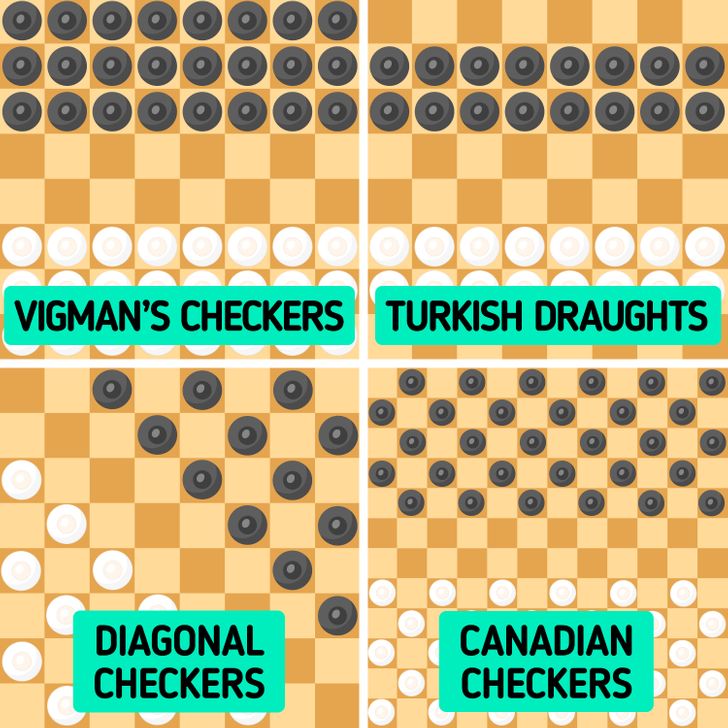
1. Vigman’s checkers
A 64-square board is used for this game. Each player places their checkers on the first 3 rows.
The opponents play 2 games simultaneously: one takes place on the black squares, and the other on the white squares. So each player makes 2 moves: first with one checker on the white squares, and then with the other on the black squares. But other options are also possible: for example, 2 moves with different checkers on the squares of the same color can be made.
The rule of a double move takes precedence over the rule of compulsory capture of the opponent’s checkers. If during the first move the player jumps over the opponent’s checker, they should do the same during the second move too. Thus, you need to have a complex strategy and maintain a balance in order to win both games at the end of the set.
2. Turkish draughts
An 8 × 8 board is used for this game, and the colors of the squares don’t matter. Each player lines up their checkers in 2 rows, leaving the first row empty.
An ordinary checker can make a move 1 square forward, left or right, but not diagonally. The king can move in the same way but along any number of empty squares. The remaining rules are similar to those in international checkers, except for the one that forbids a jump backward.
3. Diagonal checkers
This game uses a board consisting of 64 squares too. Each player gets 12 checkers at the beginning of the game. They should be lined up at the corners of the board, occupying only black or only white squares. The rest of the rules are similar to the rules in international checkers, with rare exceptions. For example, an ordinary checker is crowned if it crosses the board and gets to one of the opponent’s corner squares.
4. Canadian checkers
A 12 × 12 board is used for this game, and each player has 30 checkers. The rest of the rules of the game are similar to those in international checkers.